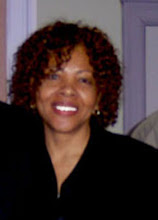Those who know me well know that I like to discuss and write about race and ethnicity. They also know that I have been pursuing genealogy for more than 25 years now. Though I came of age at a time when, at least in my high school, there were no black history classes, I grew up with a strong knowledge and pride of my black ancestry. As I've pursued my personal genealogy over these 25 years, I also developed a knowledge of and love for history. As I've read and discovered many of the atrocities African-Americans underwent during our history in this country, I have still not become inured to what occurred. I am often amazed, but more often saddened, at the mindset of many whites in the early history of this country. One such person was Dr. Walter Plecker. Dr. Plecker was the first Registrar of Vital Statistics for the state of Virginia. Dr. Plecker was a racist, a white supremacist and a proponent of eugenics. For the uninformed, eugenics is the now discredited theory that applying the principles of genetics to improve humankind. That is the "nice" definition. Its most rigorous proponents felt that interracial relationships diluted the superior race and, therefore, should be prohibited. Sir Francis Galton, in 1904, stated "Eugenics is the study of the agencies under social control that may improve or impair the racial qualities of future generations either physically or mentally." Wikipedia defines eugenics as a "social philosophy which advocates the improvement of human hereditary traits through various forms of intervention." See http://www.ourfounder.com/jleroy/eugenics.htm for a primer on eugenics. All of this is, of course, code language for selective breeding and a method to promote irrational fear of miscegenation.
About ten years ago, I stumbled across what I thought was an index of the marriage license of my paternal great-grandparents. I mailed the required fee to Virginia to obtain a copy of the actual license, knowing it would not only contain the dates of their marriage, but also the names of their respective parents. After an anxious two-week wait, I received the copy. As I eagerly perused the license, I realized that, rather than it being the marriage license of my forebears, it was the license of white couple with very similar names. Disappointed, I filed the license away. Several years later, I was able to obtain via inter-library loan, the actual microfilm of the marriage license. On the microfilm, I once again saw the marriage license of this same couple, but the race white was struck through and "Col." was handwritten on the license. After some research, I learned about the infamous Dr. Plecker. It seems that shortly after he was appointed Registrar, Dr. Plecker decided there were no true "Indians" left in Virginia, but rather "negroes masquerading as Indians." He then sent a directive to all of the vital records offices in Virginia warning of these negroes and directing the staff in those offices to comb vital records and "correct" the records. His memo even included a list of the negro families who were doing this. See http://www.melungeon.org/node/91 for an actual copy of Plecker's 1943 letter. In 1924, Plecker had this to say at a joint session of the Public Health Administration and Vital Statistics Section of the American Public Health Association in a speech that was published in 1925 in The American Journal of Public Health:
"When two races live together there is but one possible outcome, and that is *the amalgamation of the races. The result of this will be the elimination of the higher type, the one on which progress depends. In the mixture the lower race loses its native good qualities which may be utilized and developed in the presence of a dominant race."
"The mongrels are superior in mental power to the lower race. They are more cunning and more capable, but they lack the creative power of the higher race, and cannot sustain a lasting civilization that will rank with the best of the world."
Both my paternal and maternal great-grandmothers were Native Americans. After Plecker's racist initiative, many Native Virginians fled Virginia rather than be classified as "colored" or negro. Following Plecker's death in 1947, his successor continued Plecker's legacy. At about the same time Virginia's Racial Purity Act was passed, another act, "The Sterilization Act was passed. From 1927 to 1979, about 8,300 Virginians were sterilized involuntarily in Virginia.
From the grave, Plecker continues to harm the Native population of Virginia. In order to be a federally recognized tribe and receive certain federal benefits, a tribe must prove its continuous existence since 1900. Because of Plecker's actions and his declaration that there were no Indians left in Virginia, many Virginian tribes are fighting to this day to prove their continuous existence.
Further reading:
http://www.amren.com/mtnews/archives/2004/09/the_black_white.php
http://www.virginiavignettes.org/?p=45
http://findarticles.com/p/articles/mi_m1157/is_1999_April-Sept/ai_70872606/pg_5
